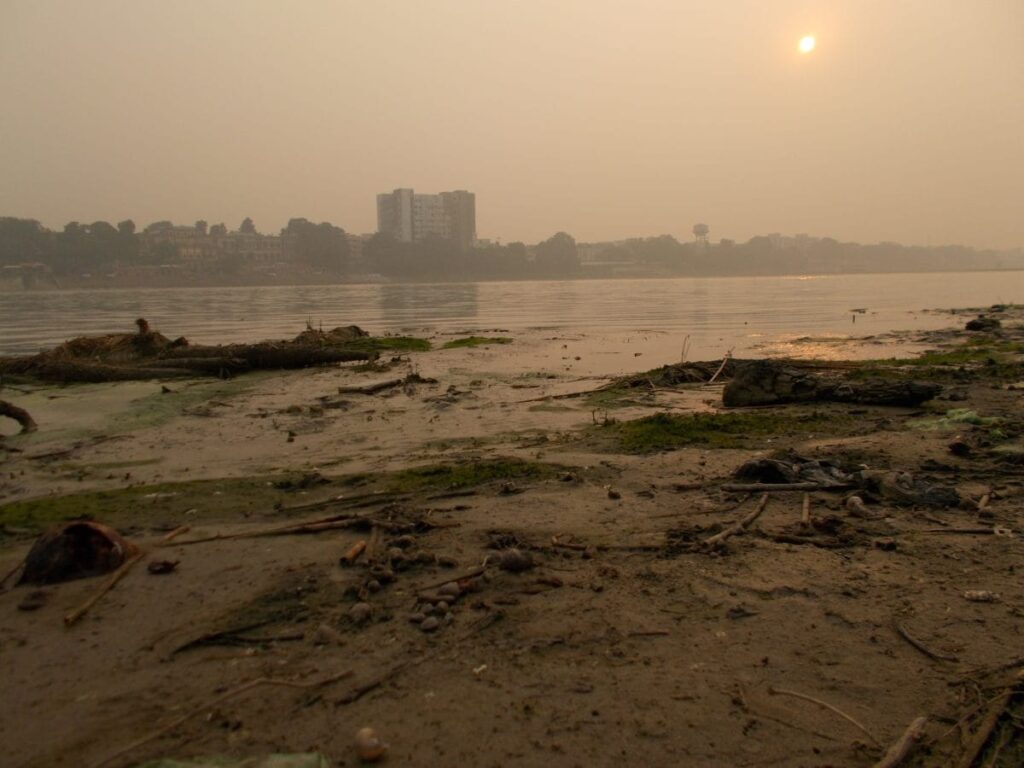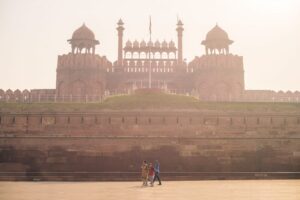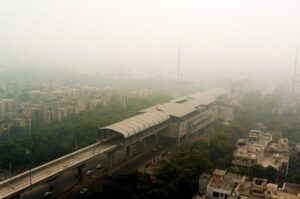
A sharp and worrying rise in pollution rates is being felt especially in the north of India, whose metros dominate the list of India’s most polluted cities.
Bihar capital Patna tops the list. Kanpur and Varanasi – both in Uttar Pradesh – follow in second and third place respectively. Delhi places fourth in the rankings, followed by Jaipur. This is per a study jointly carried out by the Shakti Foundation and the Indian Institute of Technology Kanpur (IITK), which examined data collected over a 45-day period in October and November last year. Concerningly, the data reflected pollution levels fifty percent higher in India than in China.
The study throws light on the high burden of fine particulate matter (PM2.5) pollution felt in northern cities. PM2.5 pollution is of particular danger to health, given its capacity to penetrate deeper into the lungs compared to larger particulate matter.
Poor readings are being blamed on the winter season, which often witnesses periods of severe pollution owing to a number of factors including Diwali celebrations, crop-burning, and dust storms.. Officials are working to address the crisis. “We have got the stats, and are worried about Patna,” Bihar Environmental Minister Sushil Modi said in response to the findings. “We have made an action plan for the capital city, and are trying to implement it.”
“Pollution is increasingly being acknowledged as a national crisis – not a problem affecting just the capital”

The findings highlight the grim reality of environmental health in India. Pollution is increasingly being acknowledged as a national crisis – not a problem affecting just the capital. World Health Organization (WHO) data released last year spotlighted the crisis, revealing that fourteen of the world’s fifteen most polluted cities are in India.
The crisis should not be thought of as one confined to urban India. In fact, 75 % of pollution-related deaths occur in rural areas.
Last year, the Economic Performance Index (EPI) ranked India as the worst city in the world for environmental health. The same list placed India 177th in a list of 180 countries ranked on their environmental performance. Only Bangladesh, Burundi and the Democratic Republic of the Congo placed lower. On air quality, India ranked just two places from the bottom – ahead of only Bangladesh and Nepal.
This is observed in the impact of air pollution on life expectancy. Indians lose more than a year and a half of their lives to air pollution. Reducing pollution levels could extend lifespans in India by between 0.8 and 1.4 years. Children are especially vulnerable to the toxic effects of air pollution, putting them at risk of a plethora of health conditions. As per the World Health Organization, 60,987 deaths of children under five years of age in 2016 could be attributed to side effects of PM2.5 exposure alone – more than any other country in the world.
“The Centre unveiled earlier this year a Rs 300 crore National Clean Air Programme…[however], experts were sceptical”

This is not to say that steps are not being taken to alleviate the crisis. The Centre unveiled earlier this year a Rs 300 crore National Clean Air Programme (NCAP) to tackle pollution, aiming to reduce pollution levels by twenty to thirty per cent by 2024. Strategies employed in the NCAP include air pollution concentration; establishment of pollution monitoring networks; and awareness activities. The Centre billed the NCAP as “a collaborative and participatory approach involving relevant central ministries, state governments, local bodies and other stakeholders with focus on all sources of pollution.”
Experts were sceptical of the NCAP. Santosh Harish of the Centre for Policy Research deemed the plan “underwhelming”. A consensus emerged that the NCAP suffered from limited ambition; shortages on specifics on how to implement the programme; and a lack of legal power to enforce regulations. Indeed, targets outlined by the NCAP will not be legally binding on state governments to meet.
“In 2017, pollution claimed 1.2 million lives…without improvement, this figure is poised to triple by 2050”
India’s environmental health crisis is of a magnitude virtually unseen anywhere else in the world. In 2017, pollution claimed 1.2 million lives – equivalent to one eighth of the country’s deaths. Without improvement, this figure is poised to triple by 2050.
It has even been suggested that pollution should become a point of contention in this year’s polls. “You have to see the health issues. This has to be part of the election debate and see the connection between pollution, climate change and health,” said European Climate Foundation chief Laurence Tubiana.
This is of vital importance. Drawing public attention to the manifold issues surrounding India’s environmental health and ensuring it features prominently in political discourse is of necessity. The lawmakers should be held to account and compelled to act. It is clear that, if there is inaction, India will pay a significant cost – one measured not in rupees, but in lives.

